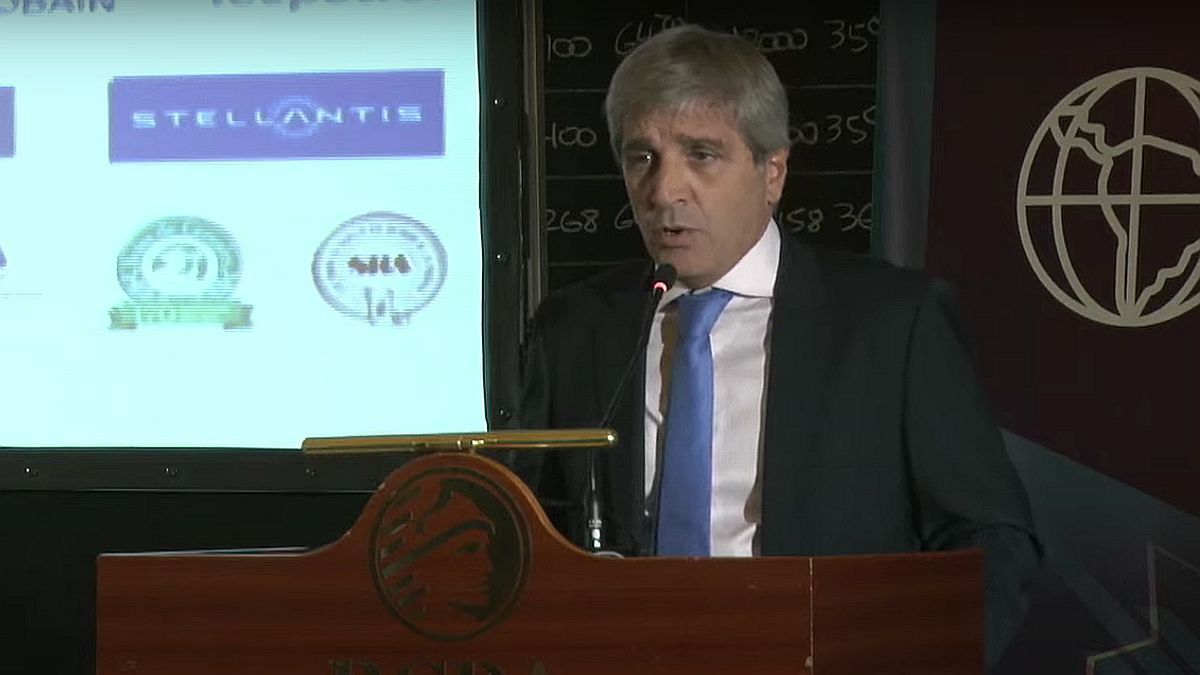The “idus” of the last months of 2024 and January 2025 came with good omens in inflation issuesoutside the institutional crisis that connects the Argentine situation with the end of the democracy of the Roman Republic, and the beginning of the Empire, a degradation that in its current phase combines the appointment of judges by decree, the Libra scandal, an “agreement” with the IMF by DNU that violates the law, repression of retirees, the violence in a congress that cannot meet and different.
The facts
INDEC reported last Friday the data of February inflation. Inflation accelerated to 2.4% in the second month of the year from 2.2% in January.
He data was influenced by meatwhich increased 7.6%, almost matching the last jump last December. This caused food to grow 3.3% compared to 1.9% in January.
The president said that if the meat is excluded, food inflation would have been close to 1.8%. It is not a valid argument. If we exclude the vegetables that fell 2.3%, Food inflation would have promoted 4.2%. In the time of another “tabit” that of Martínez de Hoz, the Government developed an index without including the meat. Nothing new.
In February, both goods (2.1%) and services (3.1%) move away from convergence to “crawling PEG” or devaluation, reduced last month to 1%monthly, with the idea of pressing the downward prices. Thing that did not happen.
He Government always highlighted as a key variable the decrease in the inflation core component (which excludes regulated and seasonal prices) that was in February 2.9%, 0.5%percentage points more than in January (2.4%). Nothing was said of the nucleus inflation this month.
The truth is that inflation found a 2%floor, a floor that cannot be drilled since 2018 except three months of 2020 in the pandemic.
Effects of official policy and why don’t inflation fall?
There is no doubt that inflation is necessary to lower inflation. One of the issues that eroded the credibility of the previous government. In May 2022, I pointed out that “no elections are won with inflation greater than 30% per year.” The previous government could not do it and lost. In July of that year, a comprehensive stabilization plan was necessary. The previous government did not do it and ended with inflation that in 2023 doubled (211.4% including 25% post -devaluation of Milei) inflation of 2022 (94.8%).
The current government has reduced inflation, after rising it strongly in the first quarter of 2024., but the current level is still very high, more if it is put in perspective (fall in activity, employment and salaries in 2024).
But a part of society values the loss of these months, because The Government puts the reduction as an objective, beyond the lack of a comprehensive stabilization plan that allows a sustainable low inflation. Without a consistent plan that attacks all the causes of inflation, it will be difficult to pierce the 2% monthly floor.
For official discourse, inflation is an exclusively monetary phenomenon. The monetary base grew less than 2% in 5 of the last seven months and fell (-0.8%) in February. However, as found in 2019 inflation does not fall.
Interestingly (or not) in a government that decides that monetarist theory, the Government appeals to the “anchors” exchange and tariff which applied the “heterodox” previous government and adds a salary anchor, not homologating joints with salary increases greater than 2% monthly. Why use the denoted anchors if inflation is just a monetary phenomenon?
It is clear that inflation is a complex and multicausal phenomenon and although macro balances and anchors are necessary, if they are used correctly to stabilize, the government underestimates three factors that feed back prices.
- Inflation does not fall because the government does not stop the “inflationary inertia” of goods and services that index for past inflation, such as rentals. As we said in a note in this column last year the relatively successful stabilization plans to lower inflation (southern, convertibility) included measures to curb inertia.
- The increase in prices has a structural component that the government does not face. Issues that include from practices at odds with competition, in addition to bottlenecks in an supply of insufficient goods and services to meet a demand that is very partially recomposed, after the strong fell from the first semester of 2024. Thus it does not increase the investment due to lack of credibility, excessive costs, uncertainty, reduced consumption and unfair import competition for broad sectors of national production, outside the national production oligopolic or monopolics of some sectors.
- A sustainable comprehensive anti -inflation plan requires having “sincere” prices and it is clear that this rate of exchange is only sustainable with “stocks” and intervention. “Libertarian heresies” like anchors. With insufficient reserves and a backward exchange rate, devaluation expectations feed high schools for pricing expectations.
Besides, The exchange delay is aggravated by inflation that remains high and above the devaluation rate. The government tries to lower prices opening imports. Outside the serious damage that entails to the productive fabric, not only that inflation does not lower and the shortage of dollars is aggravated, due to the phenomenal rise in tourism, trips and imports, which increases the external deficit, presses on reserves and increases devaluation expectations, generating a vicious circle in the exchange sector and prices.
An issue to be remembered (which we review here) is that inflation figures do not represent the cost of real living, because the current index uses a 2004 outdated basket, having the INDEC has been ready for months, a new index with a basket that arises from the 2017 Household Survey.
The well -measured inflation with an updated basket, is at least 10 percentage points higher than the official indexwhere the most obvious issue is that services weighed little in 2004 and are now a drain in the citizen pocket. The serious thing is that the CPI which is a “roof” for the peers and the adjustment in the retirement mobility formula, underestimates real inflation and aggravates the fall of income.
By way of conclusion
For now, the government has credit in certain sectors of the population, due to the aforementioned inflation these months, compared to the strong rise of the first quarter of 2024. This refers to the first years of convertibilitywhen after the “hyper” from 1989 to 1991, the population valued such a decrease, outside productive and social deterioration.
Similarly to Rome, while there is some bread and a lot of circus to tolerate the calígulas and the nurses. Until the “PAN” begins to be missing, or more modernly expressed, when unemployment and poverty grow, disenchantment ensures and institutional issues, minimized by “stability.”
Plutarco says that Julio César found himself in the IDUS of March with a seer who had predicted the famous general that March 15 would be dangerous. César finds it that day and says sarcastically to the seer when he saw him, “the March Idus has arrived”, but he replied “but it is not over yet.” César “didn’t see her” ended and badly.
In Absence of consistent economic policies, it is expected that future “idus” do not bring good omens. In this sense and much more when there are institutional crises, we must not be a seer to affirm that beyond or here in the calendar “the idus is not over.”
Source: Ambito




